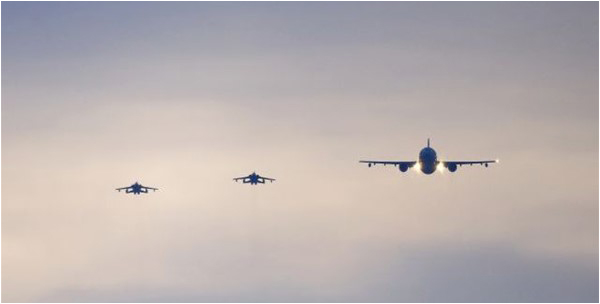
Textbooks will tell you that for a business to become a success story you need an innovative solution to a problem that exists—something that Uber and Careem do—or you need to keep costs low to beat competition that exists—the Chinese model. Successful entrepreneurs will say you need hard work, discipline and focus to stand out. Business people will say you need an enabling environment, skilled labour and government support, consistent policies.
In PIA’s case, did any of these really happen? After being the shining star, it flew into oblivion, incurring loss after loss as its owner, the government, failed to inject the necessary cash it needed to stay in the game. With East Pakistan no longer a part, PIA lost half its traffic, but the downfall didn’t begin with the fall of Dhaka.
PIA continued being a success story as it catered to Pakistani workers looking for employment in the Gulf. The country’s own economy was flourishing and greater GDP meant its citizens continued to travel internationally as well as on domestic routes.
So where did PIA’s troubles actually begin? Its financial muscle and expertise even helped set up Dubai-based Emirates in the mid 1980s. Many say this is where the downfall began. PIA just helped create competition, an airline that decades later would eat away at its market share.
The bigger jolt, however, came when Pakistan adopted the ‘open skies policy’ that would give greater access to Gulf carriers that had richer, oil-powered governments pumping in cash to their airlines. The open skies policy, adopted in the early 1990s, allows foreign airlines, particularly those from the Middle East, to make multiple flights to and from many cities in Pakistan. The free market, although said to create competition, has hurt PIA’s interests and, together with the national carrier’s own dwindling reputation, taken away its market share.
No one doubts that the airline industry is one of the most capital-intensive, requiring huge amounts of investments and discipline. It’s one business where a consumer has to sit through hours-long journey, noticing every little detail and enjoying every single service the airline and its staff have to offer. Hence, it makes it all the more sensitive to detail and mistakes.

Under the scenario, did PIA really make the most of it? Did it manage to keep costs low? Its expenses on employees only went higher, as unions got stronger and bigger. Did the government, despite being the owner, provide an enabling environment? The open skies policy suggests otherwise. Did it remain efficient or disciplined? It banked on the sacrifice of a black goat to keep it safe, and was recently in the news for carrying more passengers than the total number of seats onboard. Hence, the simple answer to all the questions is no, it didn’t.
As other carriers ate away at market share, PIA was left with flying routes that Gulf airlines wouldn’t touch. PIA didn’t let go of those routes, and it was a strategic decision not to. It was the national carrier and had to serve the nation. Shorter and unprofitable routes were flown, also because the railways proved to be an inefficient substitute as well.
But this wasn’t just PIA’s own doing. Taxes, which remain a significantly large portion of an airline ticket, pushed ticket prices higher even as fuel prices came down. The government continued to earn through the sale of tickets, but shouted privatisation every time a solution was sought to PIA’s financial crisis.
Here is some context to PIA’s financial crisis, which many believe can be resolved through privatisation.
The airline’s accumulated losses are hovering around the Rs270 billion mark. Its total liabilities stand at another Rs364 billion with Rs214 billion of those being current liabilities—an amount the company expects to pay back within 12 months. Hence, when you think selling off the national carrier will resolve anything, think that the government would have to immediately spend over Rs500 billion or incur a loss of the same amount to clear its dues. No strategic investor would want a debt-ridden financial statement.
Only after the debt has been written off can negotiations happen on what the airline is truly worth. Then come PIA’s staff and its competence levels. Detractors of the government owning the airline say, ‘Look at K-Electric and how it has turned it around’. Please note, however, that K-Electric, then known as KESC, was the only player in the field, catering to an ever-growing population of Karachi with no competition.
PIA, on the other hand, will soon have another competitor by the name of SereneAir, a private airline that started working in January this year on the domestic routes, including Islamabad-Karachi, Lahore, Peshawar, Quetta, Multan and Faisalabad. Needless to say, this will hurt PIA’s revenues as well. The new airline becomes the fourth Pakistan-based carrier to cater to the domestic public and is said to have deep pockets feeding it. With Chinese investment pouring in, SereneAir has acquired three new Boeing 737-800s and is flying on eight local destinations already. In such a scenario, where the Civil Aviation Authority has encouraged new airlines and given access to foreign carriers in the name of creating competition and a free market, no one really tried to lessen PIA’s woes.
There is no one reason why PIA has remained in a loss. With the country literally experiencing isolation post 9/11 and the number of domestic and international tourists falling, it was hardly a surprise that the airline suffered. Aircraft then had to be leased as no investments came PIA’s way.
Successive governments need to be blamed. They failed to inject investments, innovate and, in fact, let competition thrive. Karachi, Lahore or even Islamabad never became a hub for travelers for multiple reasons. PIA suffered here, too. If this were not enough, the staff at PIA used it for job security, the government used it as a personal taxi and the public used it as a litter box. PIA didn’t fail Pakistan. The country failed its once-thriving airline.
The writer is a business reporter in Karachi
In PIA’s case, did any of these really happen? After being the shining star, it flew into oblivion, incurring loss after loss as its owner, the government, failed to inject the necessary cash it needed to stay in the game. With East Pakistan no longer a part, PIA lost half its traffic, but the downfall didn’t begin with the fall of Dhaka.
PIA continued being a success story as it catered to Pakistani workers looking for employment in the Gulf. The country’s own economy was flourishing and greater GDP meant its citizens continued to travel internationally as well as on domestic routes.
The bigger jolt, however, came when Pakistan adopted the 'open skies policy' that would give greater access to Gulf carriers that had richer, oil-powered governments pumping in cash to their airlines
So where did PIA’s troubles actually begin? Its financial muscle and expertise even helped set up Dubai-based Emirates in the mid 1980s. Many say this is where the downfall began. PIA just helped create competition, an airline that decades later would eat away at its market share.
The bigger jolt, however, came when Pakistan adopted the ‘open skies policy’ that would give greater access to Gulf carriers that had richer, oil-powered governments pumping in cash to their airlines. The open skies policy, adopted in the early 1990s, allows foreign airlines, particularly those from the Middle East, to make multiple flights to and from many cities in Pakistan. The free market, although said to create competition, has hurt PIA’s interests and, together with the national carrier’s own dwindling reputation, taken away its market share.
No one doubts that the airline industry is one of the most capital-intensive, requiring huge amounts of investments and discipline. It’s one business where a consumer has to sit through hours-long journey, noticing every little detail and enjoying every single service the airline and its staff have to offer. Hence, it makes it all the more sensitive to detail and mistakes.

Under the scenario, did PIA really make the most of it? Did it manage to keep costs low? Its expenses on employees only went higher, as unions got stronger and bigger. Did the government, despite being the owner, provide an enabling environment? The open skies policy suggests otherwise. Did it remain efficient or disciplined? It banked on the sacrifice of a black goat to keep it safe, and was recently in the news for carrying more passengers than the total number of seats onboard. Hence, the simple answer to all the questions is no, it didn’t.
As other carriers ate away at market share, PIA was left with flying routes that Gulf airlines wouldn’t touch. PIA didn’t let go of those routes, and it was a strategic decision not to. It was the national carrier and had to serve the nation. Shorter and unprofitable routes were flown, also because the railways proved to be an inefficient substitute as well.
But this wasn’t just PIA’s own doing. Taxes, which remain a significantly large portion of an airline ticket, pushed ticket prices higher even as fuel prices came down. The government continued to earn through the sale of tickets, but shouted privatisation every time a solution was sought to PIA’s financial crisis.
Here is some context to PIA’s financial crisis, which many believe can be resolved through privatisation.
The airline’s accumulated losses are hovering around the Rs270 billion mark. Its total liabilities stand at another Rs364 billion with Rs214 billion of those being current liabilities—an amount the company expects to pay back within 12 months. Hence, when you think selling off the national carrier will resolve anything, think that the government would have to immediately spend over Rs500 billion or incur a loss of the same amount to clear its dues. No strategic investor would want a debt-ridden financial statement.
Only after the debt has been written off can negotiations happen on what the airline is truly worth. Then come PIA’s staff and its competence levels. Detractors of the government owning the airline say, ‘Look at K-Electric and how it has turned it around’. Please note, however, that K-Electric, then known as KESC, was the only player in the field, catering to an ever-growing population of Karachi with no competition.
PIA, on the other hand, will soon have another competitor by the name of SereneAir, a private airline that started working in January this year on the domestic routes, including Islamabad-Karachi, Lahore, Peshawar, Quetta, Multan and Faisalabad. Needless to say, this will hurt PIA’s revenues as well. The new airline becomes the fourth Pakistan-based carrier to cater to the domestic public and is said to have deep pockets feeding it. With Chinese investment pouring in, SereneAir has acquired three new Boeing 737-800s and is flying on eight local destinations already. In such a scenario, where the Civil Aviation Authority has encouraged new airlines and given access to foreign carriers in the name of creating competition and a free market, no one really tried to lessen PIA’s woes.
There is no one reason why PIA has remained in a loss. With the country literally experiencing isolation post 9/11 and the number of domestic and international tourists falling, it was hardly a surprise that the airline suffered. Aircraft then had to be leased as no investments came PIA’s way.
Successive governments need to be blamed. They failed to inject investments, innovate and, in fact, let competition thrive. Karachi, Lahore or even Islamabad never became a hub for travelers for multiple reasons. PIA suffered here, too. If this were not enough, the staff at PIA used it for job security, the government used it as a personal taxi and the public used it as a litter box. PIA didn’t fail Pakistan. The country failed its once-thriving airline.
The writer is a business reporter in Karachi

